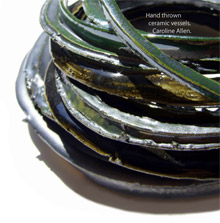N.B. Shcherbakov, I.A. Shuteleva, T.A.Leonova, A.A. Golyeva, V.U. Lunkova,
L.A. Kraeva (Bashkir State Pedagogical University, Russian Academy of Science, Moscow, Archaeological Museum, Orenburg Pedagogical University)
The territory of Bashkir Transurals, included in Ural and Volga region, considerably differs in archeological sense from neighboring regions. The population of the Late Bronze Age was a mixed one, a syncretical carrier of two traditions – Andronovsky and Srubnay ones. Burial and settlement objects combine mixed cultural traditions of steppe and forest-steppe population. The main archeological material is the ceramic complex, discovered at burial and settlement sites. In the process of investigation the complex of sites consisting of five simultaneous settlements – Usmanovo I – III settlements, Muradymovo settlement and 57 Kazburun barrows was examined. The complex of significant sites is located at the right bank of Urshak river, on the territory spreading over 12 km. During archeological investigations 7028 sherds were obtained (including 48 entire vessels). For this complex of significant sites the following groups of scientific analyses were applied – radiocarbon dating of ceramics, which showed that it was produced between XVI – XV century BC (N.N.Kovalukh, V.V.Skripkin), technical analysis of ceramic material, paleo-pedological analyses (including raw material for ceramics), metallographic analyses, pale-ozoological analyses and paleo-anthropological analyses. This analyses were performed with the support of RHF № 12-11-02007 a/U.
The analyses of ceramics complex was carried out. The ceramics of Srubnay cultural-historical community is a rather standardized one (the ornament represents denticular stamp, notches, scribed lines, rhombi, open triangles, seed-like pits). In the contact area of mixture of two groups of Srubnay and Andronovskay population vessels with marks were found out (zoomorphic pictograms, complex iconic figures). In the process of technical analysis of the ceramics (N.P.Salugina, L.A.Kraeva) it was established that in the vessels there were admixtures of fire clay, sand and organics in different concentrations. Five sources of clay for the vessels were found out; digging tradition of above mentioned clay deposits was stable, as fire clay analysis has shown that the same clays were used. As may be supposed, small relative groups inside these regions used to obtain the clay in several particular places – some kind of clay deposits. Elemental probing of vessels clay has shown presence of carbonates. Constructing of ware was carried out in accordance with several programs of stuff preparing. Hollow body of the vessels was constructed basically in spiral trajectory with the help of bands and short braids, stripes by loop and rags. Means with soft and hard working part were used to treat the surfaces of the vessels (fingers, fabric, and hard object – pebble stones). Shaping was carried out during constructing of the vessels with the help of sculpture modeling; in some cases beating with the help of beater took place (typical for Andronoid population). To prepare moulding compounds, as a rule, fire clay and organics were used. Repeat of the same composition in the paste proves that this tradition was stable and the population had external cultural homogeneity. Differences on the level of fineness and concentration of fire clay, usage of manure in its different conditions (naturally wet and extraction) probably points at particular family groups of ceramics producers. Almost all compositions of moulding compounds established are typical ceramics of Srubnay culture. It should be noted that the potters of Srubnay culture preferred large fire clay and manure or manure extraction. In the moulding compound composition of the most of the ware of Andronoid nature small fire clay and organic solution can be found. Wide variety of clays and many compositions of moulding compounds discovered in investigated ceramics may mean possible inflow of little groups of population probably caused by marital contacts. This is confirmed by anthropological data (presence of Mongoloid and European population), differences in obsequies even in one barrow and walls of the settlements. Generally it should be noted that judging by adaptive skills (peculiarities of clays, composition of moulding compounds, surface treatment methods) population that left the significant sites was homogeneous by cultural composition. At the same time investigated methods of stuff preparation in accordance with different programs prove that in combining of population groups that left these settlements and barrows minimum two culturally different population groups took place.


